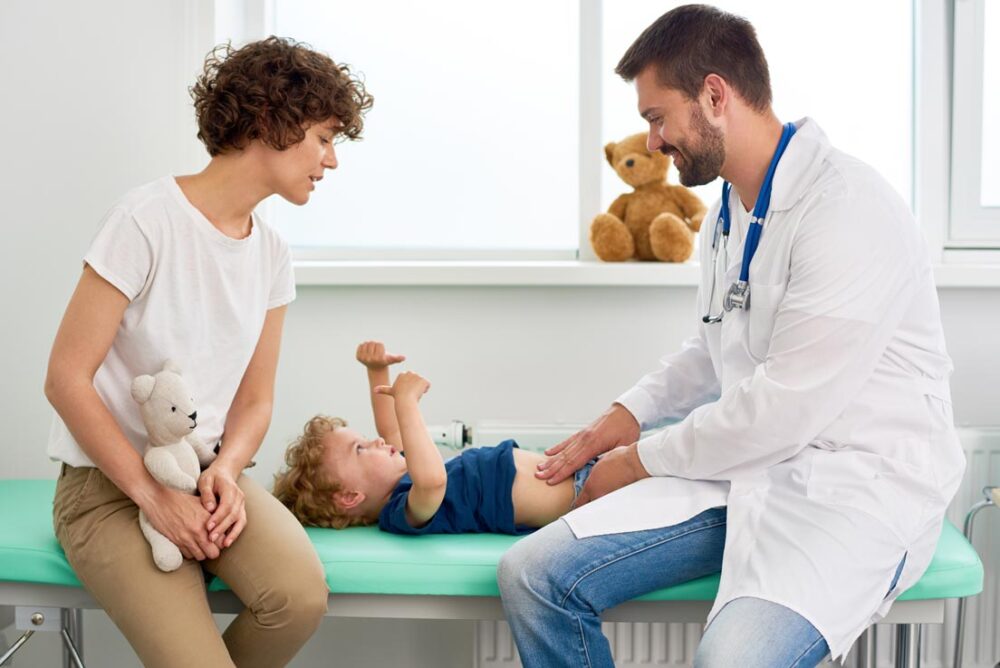Advertisment
Using antibiotics alone to treat children with appendicitis is a cost-effective and safe alternative to surgery, study shows

Using antibiotics alone to treat children with uncomplicated appendicitis is a cost-saving alternative to surgery, according to a study published in the Journal of the American College of Surgeons (JACS).
Appendicitis is the fifth most common reason for hospitalization among children in the U.S., and appendectomy is the most common surgical procedure performed during inpatient hospitalizations in children, according to the National Institutes of Health.
Appendectomy is also one of the costliest surgical procedures performed during hospital stays; however, treating appendicitis with intravenous antibiotics alone, known as nonoperative management, has been shown to be a safe and effective alternative in previous studies.
“We know that nonoperative management of appendicitis is safe and effective, so what surgeons want to know is whether nonoperative management is cost-effective. Our study helps answer that question,” said study coauthor Peter C. Minneci, MD, FACS, chair of the department of surgery at Nemours Children’s Health in Wilmington, Delaware. “This cost analysis demonstrates that nonoperative management for pediatric uncomplicated acute appendicitis is the most cost-effective management strategy over one year, compared to upfront surgery.”
Antibiotics vs. Urgent Surgery
The analysis was based on a review of data from more than 1,000 patients, age 7 to 17, who were treated for uncomplicated acute appendicitis at several hospitals throughout the Midwest region between 2015 and 2018. Parents were given the choice of two treatment strategies — antibiotics alone or urgent laparoscopic appendectomy. Nonoperative management consisted of at least 24 hours of intravenous antibiotics. Patients whose symptoms did not resolve underwent laparoscopic appendectomy during the same hospital admission.
Ratio of costs-to-charges-based data (cost divided by the charges) for the initial hospitalization, readmissions, and unplanned emergency department visits were extracted from the Pediatric Health Information System, which captures data from approximately 50 children’s hospitals. Patient-reported health-related quality-of-life scores and disability days (a measure of time off from school and pain) were determined at 30 days and 1 year after treatment respectively. Using a standardized survey, children were asked how they were doing in daily life and how they felt about their quality of life.
For these analyses, researchers looked at quality-of-life scores after 30 days and converted them to datapoints. Quality-adjusted life year scores ranged from zero to one, with one being perfect health and no issues and lower scores reflecting worsening health and dysfunction, with a zero score reflecting death. A quality-adjusted life year score indicating normal health without issues would be about .95. Quality-adjusted life year scores were evaluated for each patient and compared. Patients were followed for one year, and total average costs for each strategy were calculated in 2023 dollars.
Key Findings
- Of 1,068 patients, 370 chose antibiotics alone and 698 opted for urgent laparoscopic appendectomy.
- The results show an average cost of $9,791 and 0.884 quality-adjusted life years per patient for laparoscopic appendectomy and $8,044 and 0.895 quality-adjusted life years per patient for nonoperative management.
- Nonoperative management was both less costly and more effective in three analyses, including an analysis using disability days and alternative methods of calculating quality of life and cost over one year.
“Our study findings add an additional benefit to the antibiotics-only approach being safe and effective for children in that this strategy is shown to be cost effective,” Dr. Minneci said. “In short, nonoperative management is a safe and cost-effective initial therapy and a reasonable alternative to surgery.”
Study authors said the next step is to investigate rates of treatment failure and cost-effectiveness of outpatient nonoperative management and laparoscopic appendectomy with same-day discharge.
Some limitations of the study are the one-year follow-up period and the fact that the analysis only includes patients treated at children’s hospitals across the Midwest region. As a result, these findings may not apply to other patient populations, the authors said.
Coauthors are Lindsay A. Gil, MD, MPH; Lindsey Asti, MPH, PhD; Huey-Fen Chen, MHA, PhD; Jacqueline M. Saito, MD, FACS, MSCI, MBA; Prasanth Pattisapu, MD, MPH; Grace Z. Mak, MD, FACS; Ronald B. Hirschl, MD, FACS; Samir Gadepalli, MD, FACS, MBA; Michael A. Helmrath, MD, FACS; Charles M. Leys, MD, FACS; Dave R. Lal, MD, FACS; Matthew P. Landman, MD, FACS; Rashmi Kabre, MD, FACS; Mary E. Fallat, MD, FACS; and Katherine J. Deans, MD, FACS, MHSc.
The study is published as an article in press on the JACS website.
Author Disclosures: Nothing to disclose.
Citation: Cost-Effectiveness of Nonoperative Management vs Upfront Laparoscopic Appendectomy for Pediatric Uncomplicated Appendicitis Over 1 Year. Journal of the American College of Surgeons. DOI: 10.1097/XCS.0000000000001232





